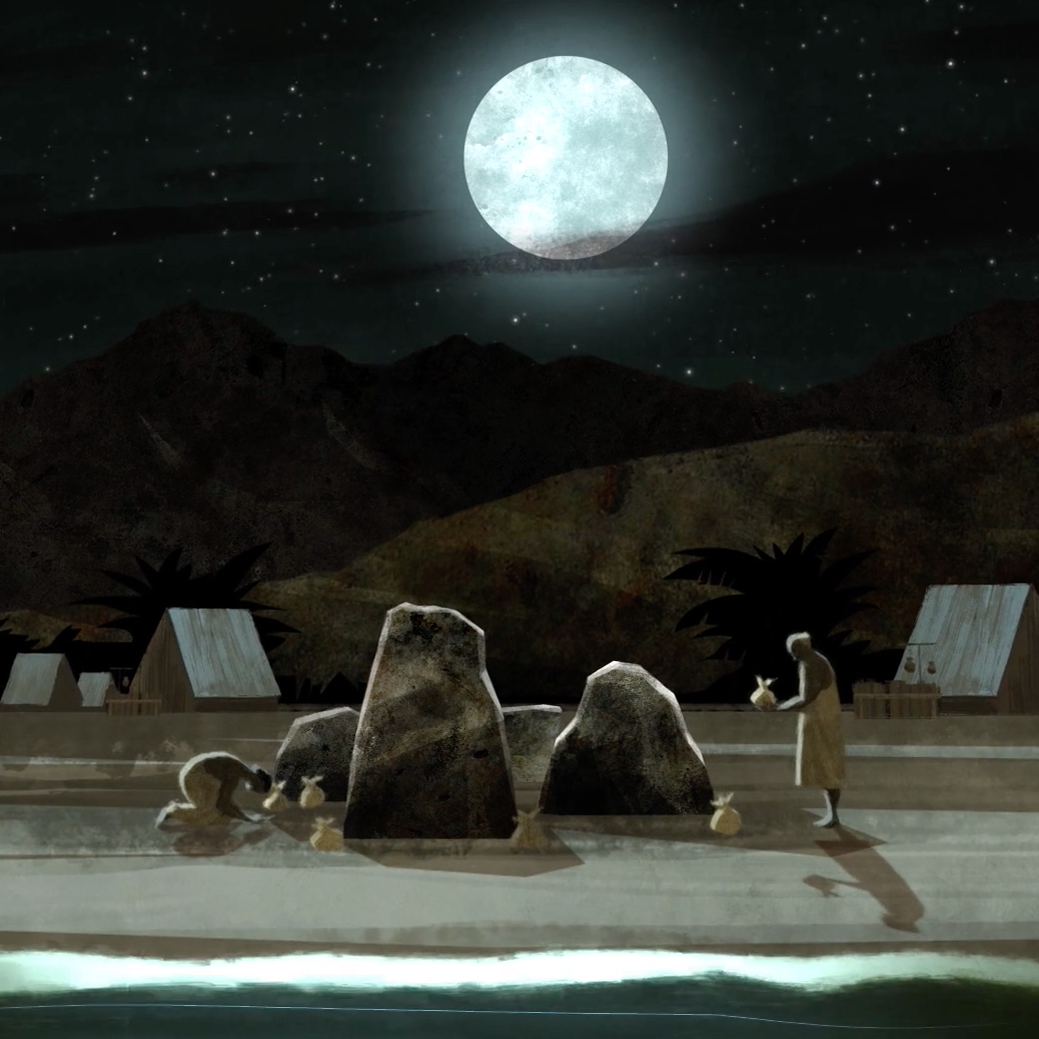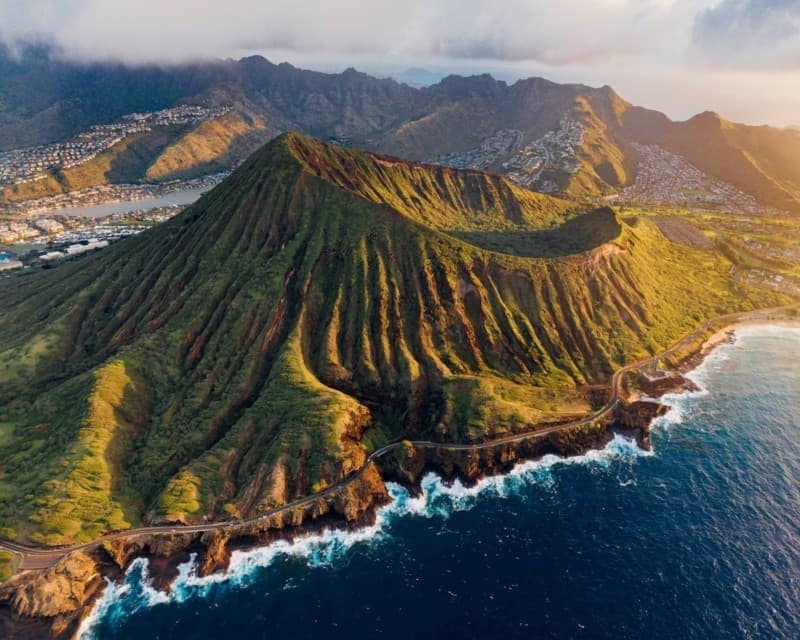“Aia ka piko I Mauliola ma Hawai‘i, ka one hānau, ka ʻāina makuahine o Kanaka.”
The umbilical cord remains grounded in Hawaiʻi at Mauliola, the birth sands of the Hawaiian.
The guiding principle in the work of Qwaves & Kanaka Pakipika is that Hawaii is the piko, or source: the navel where life begins, and the connection to the ancestral realm, family, and future descendants. Exploring monuments and memorialization through this worldview lends to a holistic and inclusive view of the body, mind, and spirit, wellness, and the identities of ourselves and others.
Our approach is grounded, first, in our place in Hawaii, and then in the Pacific, rather than vis-a-vis or in comparison to dominant Western frameworks of culture and history.
Seen this way, monuments in Hawaii have a different meaning and context than those in the continental United States. Each has its own unique story and name, often layered with multiple kaona, or hidden meanings. When foreigners arrived in the islands, they often misinterpreted or suppressed these stories, a process that was not only a byproduct of colonization but was intrinsic to delegitimizing Indigenous thought and societal patterns.
The monument landscape in Hawaii over the past decade has been dominated, and continues to be inspired, by the struggle to protect Mauna Kea, a deeply sacred mountain on which scientific research institutions have a mission to build an enormous telescope, despite Native Hawaiian and allied local opposition.
But there are other sites that also demand attention.
As a small collective of independent media makers, we seek to discover the Indigenous stories and meanings of such sites, and to (re)invigorate them through creative and novel means of storytelling. This provides the foundation for developing collaborative, community-rooted commemorative practices that are rooted in the sacred meanings of Hawaii’s storied places.
Here we describe two sites with which we are directly involved.

The Healer Stones of Kapaemahu
The healer stones of Kapaemahu are a sacred site in the middle of Waikiki Beach, one of the most popular tourist destinations in Hawaii. According to tradition, the stones commemorate four extraordinary mahu – individuals of dual male and female spirit -- who brought the healing arts from Tahiti to Hawaii. After a long period of cultural neglect, which included being buried underneath a bowling alley, the stones were unearthed and are again accessible to the public. However, their significance as a memorial has been much diminished by the altering of their story and name to conform to foreign values and ideas. The fact that the healers were mahu, beloved by the people, was erased from view.
Our efforts to revitalize the significance of this monument began with ten years of research to understand both the origins of the story and the ways it had been suppressed and altered as the result of colonization, militarization, the rise of anti-transgender discrimination in the continental United States, and the fierce political debate over same-sex marriage that roiled Hawaii. The identities of the healers as four mahu was first ignored, then changed to two males and females, and even misinterpreted to mean “not homosexual.” Lost along the way was the very meaning of the name of the stones, Kapaemahu, which translates in English as “the row of mahu.”
We were fortunate to discover the first written documentation of the narrative, in the form of a handwritten manuscript in the University of Hawaii archives, which became the foundation for the next step, which was to tell the original story in as close as possible to the original form.

We chose animation, which combines the immediacy and imagination of great storytellers with modern accessibility, and narrated the film in the ancient Niihau dialect, the only uninterrupted form of the Hawaiian language. The resulting short film, Kapaemahu, which premiered at the 2020 Tribeca Film Festival and was shortlisted for an Oscar at the 93rd Academy Awards, has been widely viewed in Hawaii and around the world and, as a result, has created an opportunity for a historical reckoning at the site.
We are currently working with a variety of stakeholders to increase the reach, depth, and impact of this story through a bilingual children’s book, a PBS / Pacific Islanders in Communications feature documentary, and an exhibition at the Bernice Pauahi Bishop Museum, all scheduled to launch in Spring 2022.
The Healer Stones of Kapaemahu are a unique memorial to Hawaiian concepts of healing, gender diversity, and inclusion. Every resident and visitor to Hawaii should know the meaning of this monument. Its name and story deserve to be treated with the same respect and dignity as the stones themselves and understood as Hawaiians themselves once did.

Kohelepelepe
Kohelepelepe, which translates in English as “the fringed vulva,” is the traditional name for the crater of a large volcanic cinder cone located in the southeast corner of the island of Oahu. Oral tradition holds that the crater is the imprint of the flying vagina of Kapo, who detached it to use as a decoy to help her sister Pele, goddess of fire and volcanoes, avoid being raped by the overzealous pig god Kamapuaa. Missionaries renamed this prominent feature Koko Head, perhaps because they did not know the story of its name, or perhaps because they did.
Hawaiians have long regarded genitals (mai) with honor and respect, and there are many chants and hulas written in praise of the procreative organs of Hawaiian royalty.
Kohelepelepe, which is now part of a heavily hiked Honolulu District Park, should have its name and story restored.
Similar to our work to bring the Hawaiian understanding of the legend of Kapaemahu back to life, we are first creating a short animated film that will help to restore the story of Kapo's Flying Vagina to its rightful place in Hawaii's historical memory. From that will follow efforts to educate and engage communities in questioning and reimagining the English name for this sacred site.
Back to the Future
The global debate on the meaning of monuments and the lessons of history has focused on the long overdue removal of figures that honor racist and imperialist figures from our ignoble past. While this is also an issue in Hawaii - as exemplified by the statue and high school named after William McKinely, the United States President who illegally annexed the Kingdom of Hawaii against the will of her queen and people - our work asks a different question: What of monuments that are dedicated to historyʻs heroes, yet dishonor them and distort history by concealing certain aspects of the heroes’ true identity or the nature of their power?
In order to commemorate the past, we need to know and understand it, and to convey it stripped of foreign hegemony.
“I ka wā ma mua, i ka wā ma hope.”
In the time in front is the time in back.
Qwaves & Kanaka Pakipika are community-based multimedia, engagement and empowerment collectives focused on gender, cultural, racial, economic, and political justice in Hawaii led by Hinaleimoana Wong-Kalu, Dean Hamer, and Joe Wilson.
This essay in the “Changing Monument Landscape” series was commissioned as part of the launch for the National Monument Audit, produced by Monument Lab in partnership with The Andrew W. Mellon Foundation. For more on the Audit, visit monumentab.com/audit.
